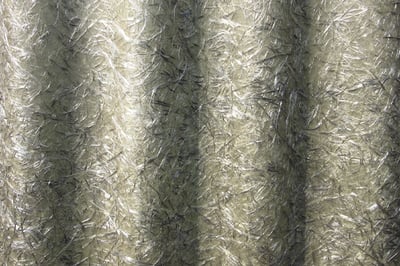The Most Versatile Industrial Material: Glass Fibre Composite

What is Glass Fibre?
As the name suggests, glass fibre is made of small strands of glass that have been melted down. It is a fibre reinforced polymer that is compromised of polymers and glass fibre stranded in a continuous pattern.
The polymer can be either a thermoset (epoxy, polyester, or vinyl ester) or a thermoplastic (epoxy, polyester, or vinyl ester). Glass fibres contain silica or silicate, as well as calcium, magnesium, and boron oxides.
The majority of all fibres used in the composites industry are glass. Glass fibres are the oldest and most common reinforcement in most industrial applications such as automotive, or construction industries in order to replace heavy metal parts. Glass fibre is a very versatile industrial material; it can be easily produced using raw materials.
Industry Insights of Glass Fibre
As glass fibre has high strength and lightweight properties, its use is estimated to increase greatly for the manufacturing of automobile and aircraft body parts. Use of fiberglass in the building and construction sector is also forecasted to grow.
Automotive Sector:
Fiberglass is used to manufacture automobile parts such as body panels, load floors, dash panel assemblies, wheelhouse assemblies, and battery boxes. The automotive industry is the largest end-use segment. Front and rear bumpers, doors, casings, and V-belts also need fiberglass to be made.
Building and Construction:
Fiberglass is mostly used in insulation, cladding, surface coating and roofing raw material. It can be used as a structural shell, since it is a lightweight material that can be easily assembled and moulded in different ways. Fiberglass composites are used in many building applications such as roofs, walls, panels, windows, and ladders. Fiberglass insulation is used in residential, commercial, and industrial buildings for thermal and electrical insulation. Its aesthetic appeal is the key factor responsible for the increased use of fiberglass composite products in homes and offices. In the construction industry, there is a continuous demand for resistant, high-strength, and light weight concrete materials.
Marine Industry:
The use of glass-fibre composites (GRP) in marine applications was one of the first areas of GRP use, it has greatly changed the capability to design and manufacture large composite structures in several sectors. Vessels are made in the UK by a variety of processes, including hand-lay GRP, resin-infusion, thermoplastics and high-performance carbon fibre for racing yachts.
Aerospace Industry:
Fiberglass is mainly used in primary parts of aircraft, such as air brakes, fairings, tail fins, motor parts, and wing tips.
Applications of Fiberglass
- Window strengthening: one of its key advantages is that they are fire-resistant
- Fiberglass rods: draw wire , fabric frames, cable strength coat and even as conductor rods to ensure safety of the workers.
- Fiberglass bars: used in building projects to produce non-slip walking surfaces. They are used in a range of other applications such as insulation, cladding, surface coating, and roofing raw material.
- Fiberglass poles: tough, lightweight, long lasting, and non-conductive.
- Glass Fibre Reinforced Concrete (GFRC)- concrete that contains fibrous material which increases its structural integrity. It´s cement-based composite material is reinforced with glass fibres. Fibres add impact strength and it is used to produce strong, lightweight architectural concrete products such as building panels. Its many benefits include its ability to construct lightweight panels, and high compressive tensile strength.
Types of Glass Fibre
E-glass, for example, is the cheapest type of glass fibre. It has low electrical conductivity, making it a good choice for applications requiring electrically insulative characteristics. E-glass is an alumino-borosilicate glass that contains no alkali oxides, and it makes up most of the world´s glass fibre production.
S-glass is an alumino-silicate glass fibre used in aerospace applications; it tends to be stronger than any other glass composites.
C-glass is a glass fibre that was developed for its resistance to chemical degradation- it is mostly used to laminate surfacing and for corrosive environments.
Advantages of Glass Fibre Composites
- Environmental resistance
- Ability to mould complex shaped structures
- Ability to tailor strength to suit loading conditions
- Excellent strength to weigh characteristics- (Glass Fibre Reinforced Concrete-GRC has half the weight of equivalent steel structures)
- Low maintenance and ease of repair
- Excellent durability
- Moisture resistance
- Chemical resistance
Glass Fibre's durability, safety and high thermal insulation makes it the most preferred material for industries. They do not only provide better insulation, but also help in protecting the machinery, while conserving its energy and ensuring safety to workforce. It would be difficult to imagine the modern world without reinforced plastics, and we will keep seeing them more as time goes by.
If you would like find out more about composites, check out our other articles at:
Machines & equipment for sale
- Surface Treatment
- Cleaning & Degreasing
- Polishing & Belt Linishing
- Mass Finishing
- Ovens & Furnaces
- Process Cooling
- Shot Blasting
- Dust & Fume Extraction
- Air Compressors
- Rectifiers & Transformers
- Miscellaneous
- Latest Stock
- Special Offers
- Direct From Site Clearances
- Auctions
- Brand New Machines
- Available Immediately
- Sell Your Machine
Machine Alert
Get the latest machines emailed directly to you as they become available to buy online. Sign Up Now

